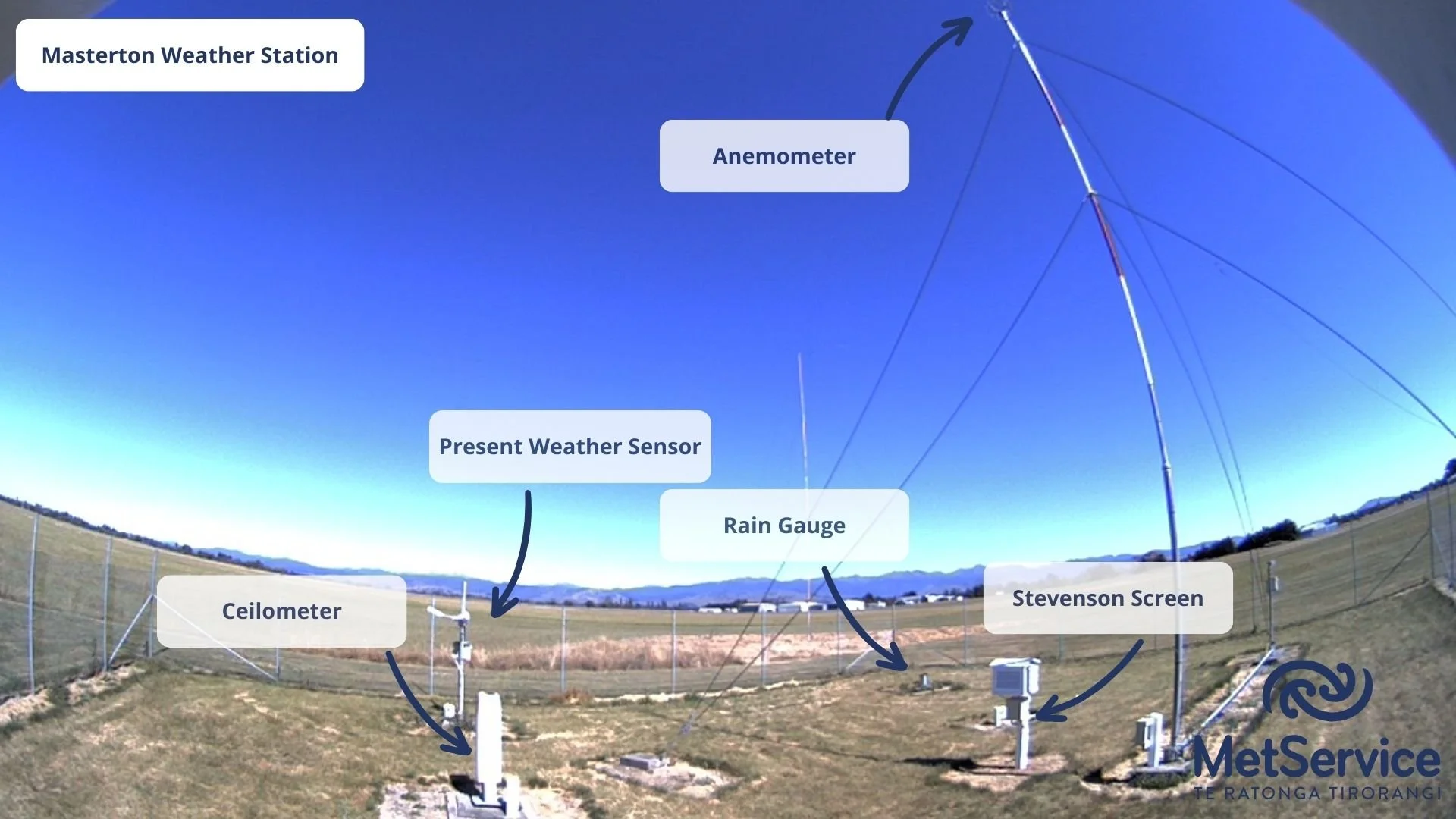Automatic Weather Stations
A long time ago, weather forecasters had to rely on people like lighthouse keepers to tell them what the weather was doing. These people would check instruments by hand and send in their observations.
These days, things are a lot easier. We now have automatic weather stations that do most of the work for us. These measure things like temperature, wind, rain, and air pressure every half hour - some even every minute - and send the information straight to a computer. That means meteorologists can check the weather from anywhere at any time.
There are more than 220 of these weather stations all across Aotearoa New Zealand. You can even set up your own at home if you’re really into weather! Out at sea, weather buoys floating in the ocean and instruments on ships do the same kind of job.
Each weather station has different instruments that measure different things, and where the station is placed is really important too.
Temperature is measured with a thermometer. But it’s not just sitting out in the sun; it’s kept in a special screen or shield that protects it from sunlight and rain. In the past, it used to be a large box called a Stevenson screen. Nowadays, most of them sit in a smaller container. This way, it measures the real air temperature, not just how hot the sun feels. Thermometers are placed 1.25 metres above the ground, all around the world.
Wind is measured using an anemometer. Wind speed can change a lot depending on where you are; things like hills, trees, and buildings can all affect it. That’s why wind is usually measured 10 metres above the ground and away from tall objects.
Rain is trickier to measure. Rain gauges collect water to show how much rain has fallen. But if the rain falls somewhere else (like with showers or storms), the gauge might miss it. Wind can also blow rain away from the gauge, and hard surfaces can cause splashes that affect the reading. That’s why rain gauges are usually placed on soft ground like grass or gravel, and preferably in a spot sheltered from strong winds.
Air pressure is measured with a barometer, and humidity (how much moisture is in the air) is measured with a humidity sensor.
Some stations, especially at airports, can even measure clouds using an instrument called a ceilometer. It can tell how much cloud cover there is, how high the clouds are, and sometimes even what type they are. Some weather stations also have webcams, so forecasters can see what the weather looks like in real time.
Annotated image of the automatic weather station setup at Masterton Airport

